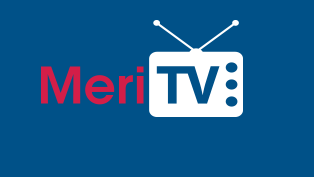
The House Appropriations Committee is proposing to fund the Technology Modernization Fund (TMF) with $50 million of new money for Fiscal Year 2022, down sharply from the $500 million proposed by the Biden administration in its budget request issued late last month.

The $50 million proposed funding level is contained in a draft version of the FY2022 Financial Services and General Government (FSGG) funding bill that is set to be considered by a House Appropriations subcommittee today. The TMF entry in the document says the proposed $50 million will be for “technology-related modernization activities,” and will remain available until expended.
For the near term, the fund remains flush after a $1 billion infusion from the American Rescue Plan Act earlier this year. The fund – administered by the General Services Administration (GSA) through the TMF Board – is actively trying to move that money to Federal agencies and get projects rolling quickly.
Last month, the fund asked Federal agencies to submit project proposals by June 2, and said it would give the highest priority consideration to proposals to modernize “high-priority” systems, improve cybersecurity, boost public-facing digital systems, and create cross-government services and infrastructure.
Matt Hartman, who is deputy executive assistant director for cybersecurity at the Cybersecurity and Infrastructure Security Agency (CISA), and also a member of the TMF board, said during a MeriTalk webinar earlier this week that the TMF board has been reviewing proposals in recent days from Federal agencies to help fund their efforts to move toward zero trust security architectures.
TMF has not yet publicly announced any new awards that draw from the recent $1 billion funding round.
“While the $50 million is not what the President’s Budget requested, it’s still better than the marks in previous years,” commented Matthew Cornelius, executive director at the Alliance for Digital Innovation.
“The key to getting more money (in the appropriations or reconciliation processes) is for OMB (Office of Management and Budget) and GSA to be constant, effective communicators about how well the TMF is working,” he said. “They should be letting the Hill and the general public know how many proposals have been submitted under their new guidance, how much money has been requested overall, and how proposals are moving through the process.”
Funding Gyrations
The relatively small proposed FY22 budget marks one more wrinkle in the whipsaw chain of events that has marked funding for the TMF – which supports Federal agency IT modernization projects – over the past year.
Here’s a chronology that marks key points in the funding path:
- Since its inception in 2017, the fund has received a total of $150 million of funding, and has not entirely spent that down, due in part to rules that requirement agencies to repay TMF awards over time with savings from funded projects;
- In each of the past two fiscal years, the fund received $25 million through the regular appropriations process.
- Fast forward to January 2021, when President-elect Biden proposed a $9 billion infusion into TMF in the immediate aftermath of the SolarWinds Orion software supply chain hack, and continued strains on some government IT systems caused by the coronavirus pandemic;
- House members discussed a compromise measure that would provide TMF with $5-6 billion of new money, while at the same time senators zeroed out new TMF funding entirely.
- The House and Senate eventually settled on the $1 billion funding, and the TMF board substantially relaxed repayment rules for awards.
Other FSGG Funding Points
The draft FSGG bill released by the House Appropriations Committee also includes:
- $132 million for the Treasury Department’s Cybersecurity Enhancement Account “to address the impacts of the SolarWinds attack and minimize the impact of future attacks”;
- $305 million for the business systems modernization at the Internal Revenue Service “to modernize IRS legacy systems and improve IRS web applications”; and
- Authority for the Office of Personnel Management to transfer up to three percent of its funding to an information technology working capital fund.
